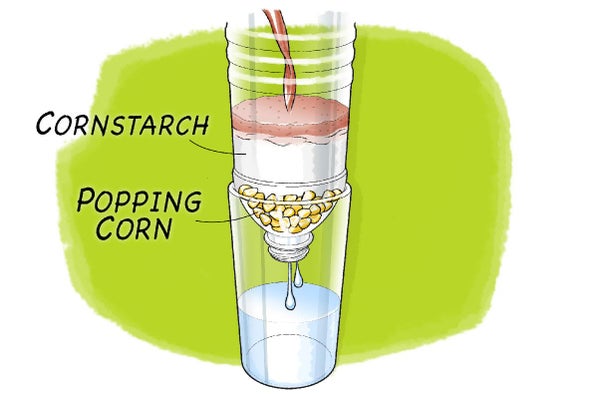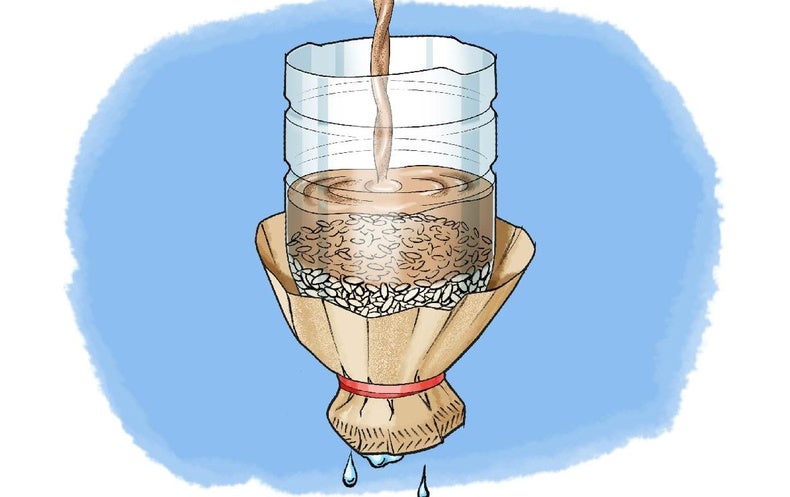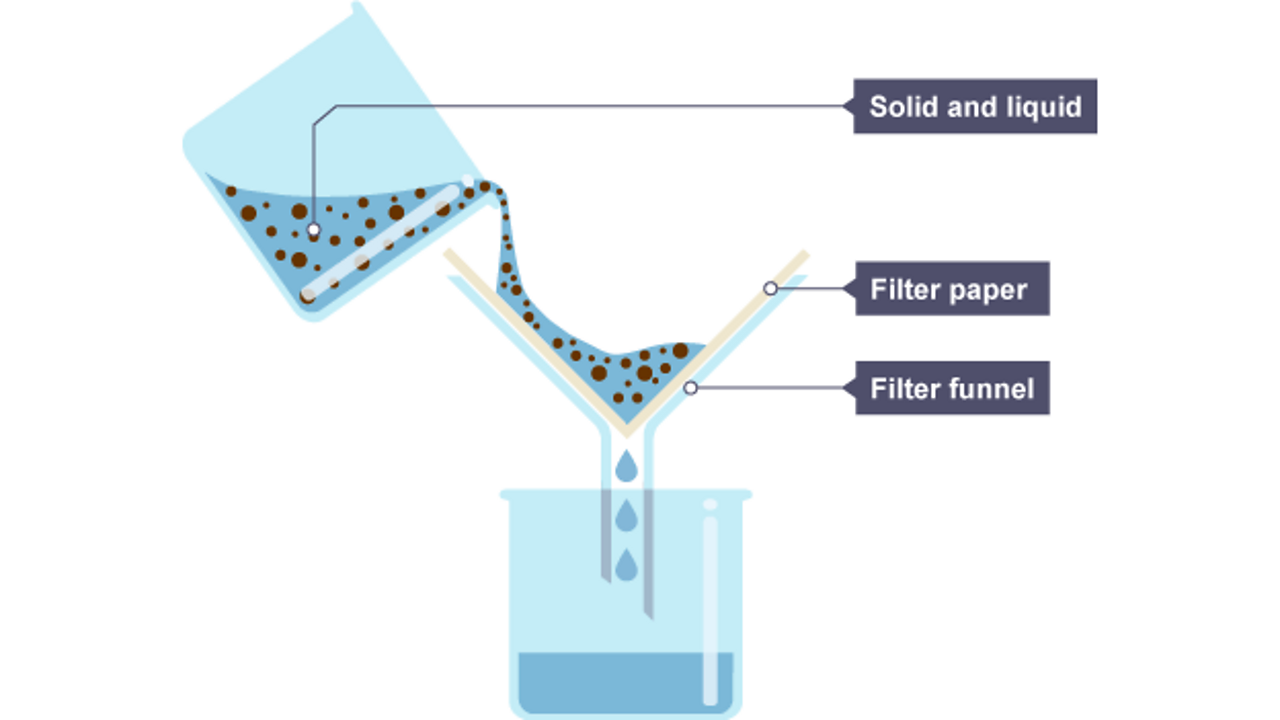If Salt Water Is Poured Through a Filter
Let the water drip through the filter and settle in the container. After water gets the clarity you want boil it to remove pathogens and enjoy your clean water.

Skeletal Design Of Bsfz Showing Internal Components Of The Filter An Download Scientific Diagram
Brainly UserBrainly User.

. Figure B shows the contents of the beaker being poured through filter paper in a funnel over a flask. The salt is totally dissolved in the water. Pre-filtering water through coffee filters removes all of the larger debris and a lot of dirt too.
After 15 days the flask contains only. A standard water filter is for removing sediment and other large particles from your water. Then pour the whole thing through piece of.
A variation of this method is to pour the salt water onto a piece of dark construction paper or a coffee filter. After collecting your filtered water pass it through the filter 2-3 times until it becomes clear. Water Filtration Systems have a set lifespan.
The drip should be slow. This process will remove most debris. Place a container below your filter to collect the water you filter.
But just using a. The first step is to mix the the salt and sand with water so that the salt dissolves. You can use coffee filters to extend the life of your water filter.
602h have pore sizes of around 2 micron. The clarified water is now pumped under high pressure to an array of reverse osmosis filters. If you wish to separate salt from water just do evaporation.
Salt dissolved in water as salt is easily soluble in water whereas sand is insoluble in water so it remains undissolved. The salt water will corrode the anchors overtime and a safety event will be pending. Another way you can separate the salt water and sand is to stir up the sandsalt water and pour it through a coffee filter to capture the sand.
The suction from your pool pump siphons water through the hoses connected to your skimmer. Pour the salt water into a shallow pan. These filters not only remove algae bacteria chlorine and heavy metals they also drastically reduce the amount of magnesium and calcium in your water.
Do NOT Add Chlorine to Your Skimmer. Two separation techniques must be used to recover pure water. In many countries drinking water is recovered from seawater which is too salty to drink.
A reverse osmosis system uses a very fine filter called a membrane which will remove dissolved salt from your water. A mixture of sand and salt when added to water to prepare a solution salt gets dissolved into water. Pour slowly if you have to filter water you probably dont have enough that you want to waste it by spilling it.
Wanting to reduce the amount of salt in your water is a great idea. A mixture of salt fully dissolved in water only contain particles whose sizes are on the ionic or molecular scale whereas the finest filter paper grades eg. When we poured the dirty water into the filter paper the dirt didnt go through the filter but the water did.
As the water evaporates the salt will remain behind. Pour untreated water through your charcoal filter. You then filter the mixture so that the salt solution passes through the filter paper whereas the sand remains behind.
Otherwise the salt will dry and start to etch the. The incoming water is forced through the spiral-wound reverse osmosis membranes at high pressure about 800 psi. The liquid that passes through the filter paper and is collected in the beaker is called the filtrate.
You can speed up the process by raising the temperature or by blowing dry air over the surface of the liquid. When you about to filtrate the mixture sand will be left in the filter paper and the salt solution will pass through. Then to regain the salt crystals you evaporate or boil off the water to be left with the salt crystals at the end.
Mix the sandsalt mixture with distilled or deionized water which should dissolve the salt. Your skimmer is designed to keep your pool free of debris. While putting chlorine directly into your skimmer may seem like an easy way to sanitize your swimming pool THIS IS A BAD IDEA.
I think when you mix sand salt and water salt will dissolve in the water and sand will not. In the beaker clear solution of salt will be there after filtering. After a while the filters just get worn out.
Up to 24 cash back cThe water will form the filtrate. The greater the pressure the higher the rate of fresh water movement through the membranes. Continue boiling it until the water is gone and youre left with the salt.
This is because of the tiny holes in the filter paper. Now the solution of mixture of sand and salt is poured through filter paper then. Heat the salt water until the water boils.
The dissolved salt in the water will not get filtered out by a simple water filter. The salt and water will pass through the filter paper while the large undissolved pieces of sand will be trapped by the filter paper. In a no-salt water conditioning system the water is sent through a series of filters.
Buyers should be aware that if you have salt water above 2800 ppm often 4000 to 5000 ppm you will need to reseal your coping every year especially if it is a porous stone like limestone or travertine. If the salt is fully dissolved then it plus the water passes through the filter paper. If salt water is poured through a filter the salt will be trapped on the filter.
Secure filter on top of a container and pour dirty water into the container through the filter. Figure C shows the same flask after sitting at room temperature for 15 days. Research the main arguments for and against the fluoridation of a towns water supply.
Pour the salt water back into the empty pan.

Top 5 Easiest Diy Water Filters You Can Make At Home Water Filtration Diy Water Filter Diy Diy Water

Global Water Softening Systems Market Revenue Expected To Expand At Cagr Of 5 9 Between 2015 An Water Treatment Reverse Osmosis Water Treatment Water Softener

Salt Water Experiment Ocean Science For Kids Water Experiments Kitchen Science Experiments Science For Kids

How Dirt Cleans Water Scientific American

Cambridge Cie Igcse Chemistry Contents Topic 2 Experimental Chemistry Chemistry Ap Chemistry Evaporation

Experimental Techniques Igcse Combined Science Teaching Resources Science Teaching Resources Teaching Science Teaching Resources

Time To Clean Your Water Scientific American

An Infographic To Visually Explain The Biosand Filter A Way Of Filtering Water Using Nothing More Than S Rain Water Collection Water Collection Water Projects

Comments
Post a Comment